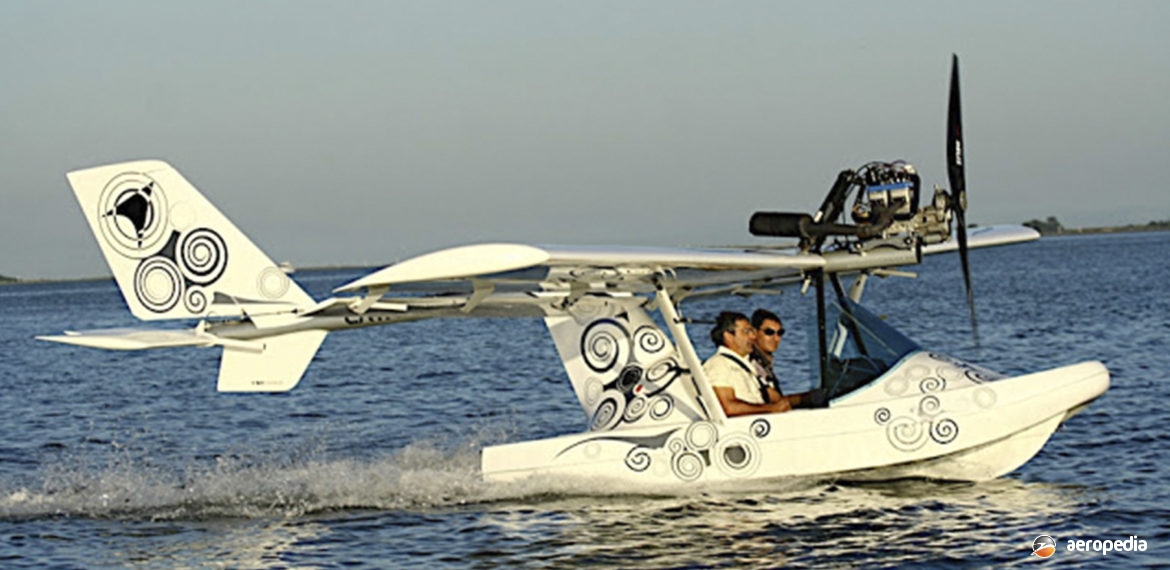Photograph:
Fly Synthesis Catalina 24-8662 (c/n F5AB0007A7AB) at Rathmines, NSW in October 2016 (David C Eyre)
Country of origin:
Italy
Description:
Two-seat light sport amphibian
Power Plant:
One 48 kw (64 hp) Rotax 582 two-cylinder, two-stroke, liquid-cooled, engine
Specifications:
- Wingspan: 9.47 m (31 ft 1 in)
- Length: 6.28 m (20 ft 7 in)
- Height: 2.49 m (8 ft 2 in)
- Wing area: 12.6 m² (136 sq ft)
- Never exceed speed: 150 km/h (93 mph)
- Max speed: 125 km/h (78 mph)
- Stalling speed: 60 km/h (37 mph)
- Rate of climb: 271 m/min (890 ft/min)
- G limits: +4/-2
- Wing loading: 39.3 kg/m² (8.0 lb/sq ft)
- Fuel capacity: 50 litres (11 Imp gals)
- Take-off run on land: 100 m (328 ft)
- Landing run on land: 75 m (246 ft)
- Take-off run: on water 190 m (623 ft)
- Landing run on water: 75 m (246 ft)
- Empty weight: 292 kg (644 lb)
- Loaded weight: 495 kg (1,091 lb)
History:
The Fly Synthesis Catalina was designed and built by Fly Synthesis in Italy as a simple to build and operate amphibian with an electrically- operated retractable undercarriage, which could be operated with a lowering system which, in the event of a problem, could be lowered and locked into position under gravity.
Initial production aircraft had a 50 litre (11 Imp gals) fuel tank but later aircraft received a 70 litre (15.4 Imp gal) tank which was located in the hull to improve centre of gravity, stability and handling. The aircraft had large control surfaces, full span ailerons and a high-lift wing taken from the Company’s Storch, this providing good low-speed performance.
The aircraft was designed to comply with Federation Aeronautique Internationale microlight regulations and United States Light Sport Aircraft (LSA) regulations. It was built of composite material, predominantly fibreglass and carbon fibre.
Imported to Australia by Fly Synthesis Australia it was fitted with marine emergency equipment for local conditions. Engine was the Rotax 582 DCDI unit and instruments were analogue with FLYDAT or EFIS available. The wheels were built from carbon fibre and the aircraft was designed similar to a boat with a Kevlar keel.
Development of the type has continued, including the installation of a variable-pitch propeller to allow thrust reversing. Options have included folding wings for transport and hangarage, and a ballistic parachute.
First of the type seen in this region became 24-8351 (c/n FSAB0050BLEC) registered under Recreational Aviation Australia (RAA) Regulations on 7 June 2013 fitted with a Rotax 582-MY99 engine, being followed by 24-8662 (c/n F5AB0007A7AB) in late 2016.

